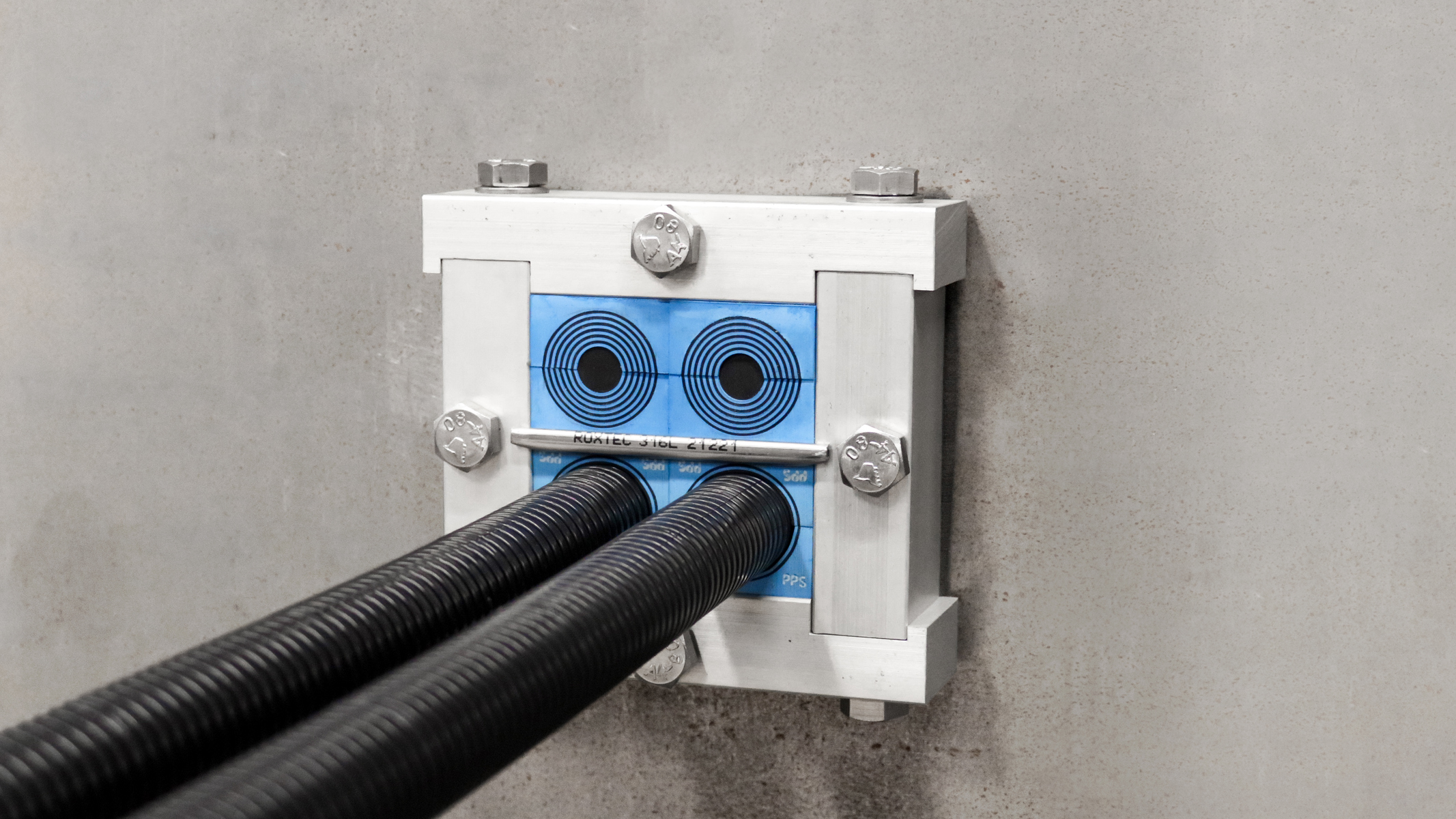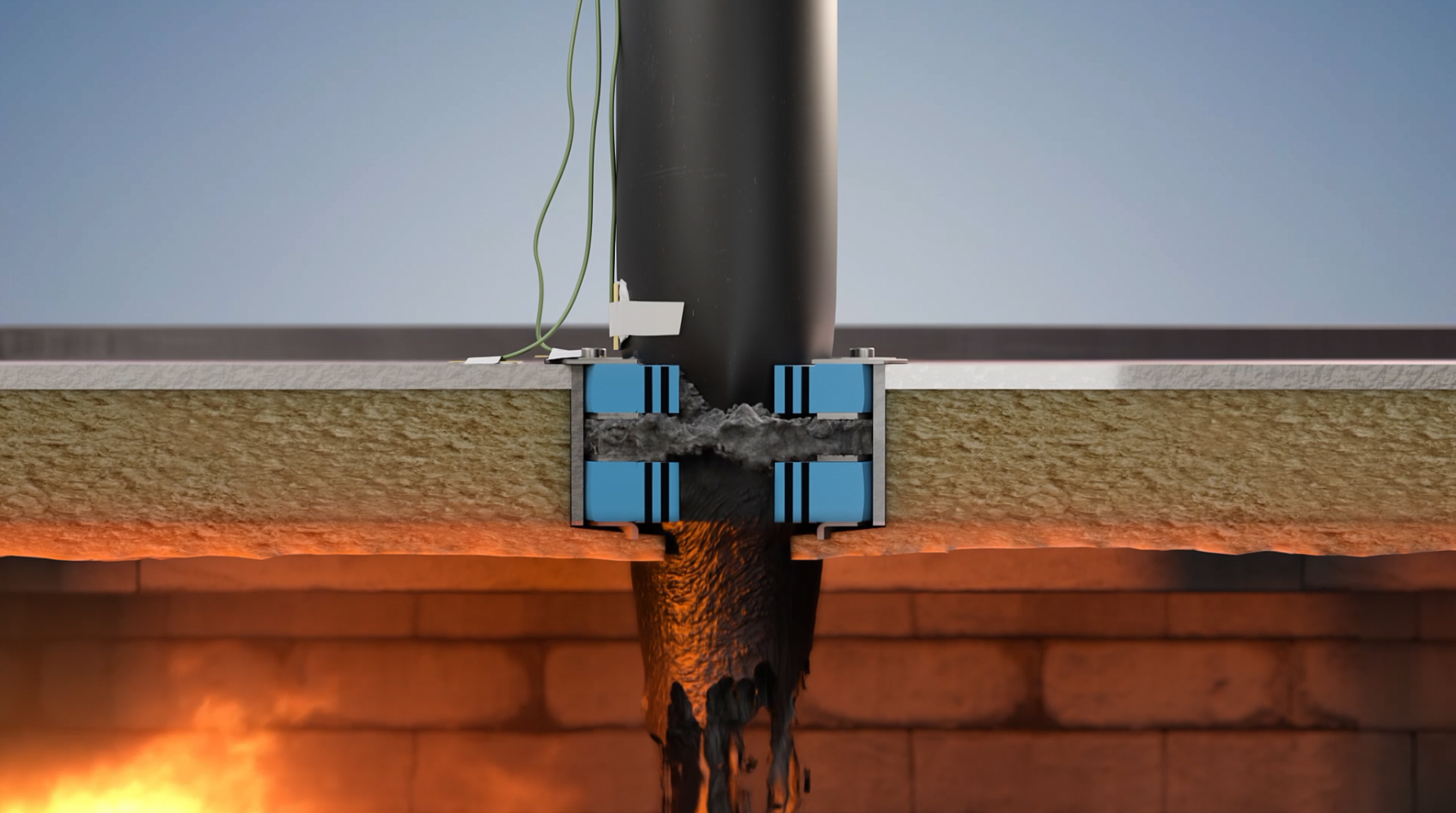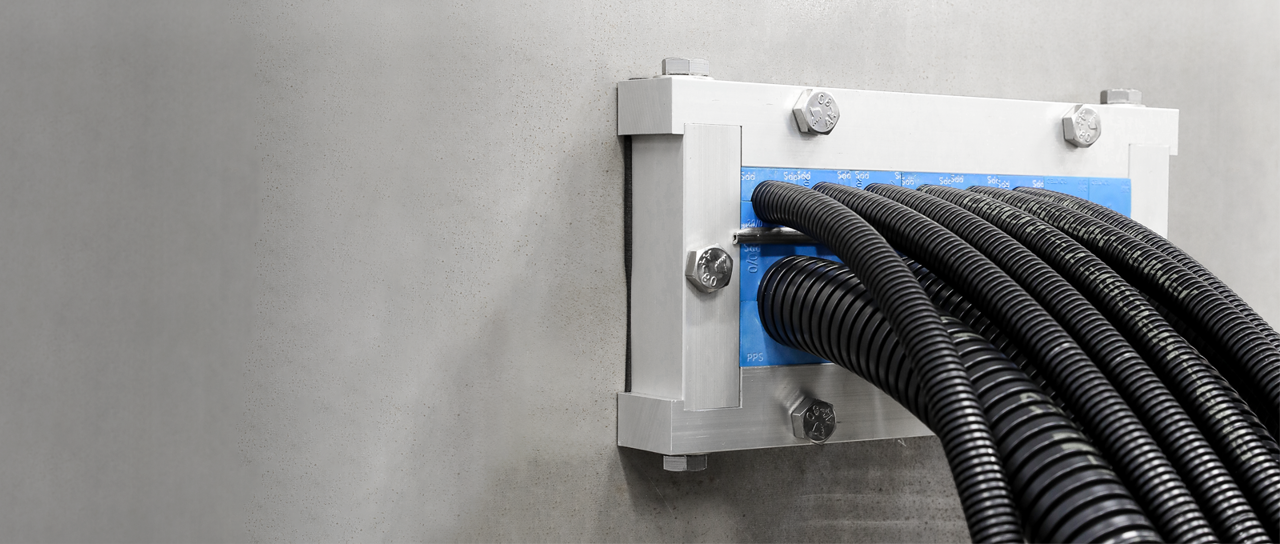Digitalization in the transportation industry is not a new trend, but with the recent advancements in digital technologies come new challenges for rolling stock designers and manufacturers. Passenger information systems, infotainment, sensors and CCTV are essential for modern and safe rail transportation. These elements drive the need for new hardware devices and increased data communication capacity. This also requires efficient protection of plastic conduit penetrations.
Data transmitted over an ethernet network is becoming the norm, but faster data transmission comes at a cost. New hardware devices add weight to the railway vehicle and reduce the space available for passengers. In addition, more data and signal cables further add weight to the vehicle. To stay competitive, manufacturers have to find ways to avoid the net increase in vehicle weight and allow the same number of passengers onboard. Energy use and operational cost affect the bottom line for rolling stock owners and must be managed by the manufacturer. A systematic approach looking at both lightweight materials and system optimization is a way for manufacturers to mitigate and offset these challenges.
Conduits for cable harnesses
An important step for manufacturers to overcome the challenges is to bundle cables and wires in harnesses and route them through conduits. Recommended practices in rolling stock manufacturing state that cables with small outer diameters must be protected by conduits and adequately supported due to safety, reliability and maintainability reasons. Doing so makes sealing of cable penetrations less space demanding as cables and wires will be routed through fewer openings. Sealing individual cables and wires one by one is just too space demanding. To manage conduits passing through walls and floors, the use of connectors and adapters is a common approach. Advancements in connector technology have reduced their size but terminating conduits and adding connectors as a mean to manage penetrations is driving cost and could be a source for failure.
Plastic conduits are lighter than metallic conduits and provide efficient cable protection, so the usage is increasing. Therefore, also cables and wiring located in the harsh environment of the underframe are often routed through flexible plastic conduits. As they pass into the passenger compartment or the driver’s cabin, they terminate with an end connector at a power or communication device.
Fire protection on railway vehicles
Regulations for electrical installations state a certain “cable to space” fill ratio which leaves plenty of open space within the conduit even when the maximum allowed capacity of the conduit is used. Yet another dilemma arises for the manufacturer as the conduit has to be sealed against water, dust and fire as it passes through fire rated walls and floors. In case of fire, a plastic conduit passing through a fire wall will melt and fall off leaving a void in the wall through which flames can propagate. Conduits must not be filled with more than 60% of their cross-section area with cables so even in a conduit filled to its allowed maximum there will be a void after the conduit. To meet the requirements in the EN 45545-3 standard, “fire protection on railway vehicles”, flames must not pass through to the other side of the wall within the time the wall is rated to, for example E30.

Sealing conduits in fire walls
Upon fire, the open void has to be blocked to prevent fire to propagate. Sealing solutions with intumescent material which swells when exposed to heat exist on the market, both in the form of sealants, cable and conduit transits and adapter systems. Intumescent material expands to many times its original volume when exposed to heat. The result is a light char which is a poor conductor of heat and works very well for passive fire protection. As it expands, the char seals all cavities around and in between cables and wires. It completely blocks the void and prevents flames to propagate.

Roxtec transit solutions for plastic conduits, “PPS”, have sealing modules with integrated intumescent material based on exfoliated graphite which expands up to 35 times its original volume. With an activation temperature as low as +140 ⁰C, smoke and flame penetration is kept to a minimum and the sealing solution meets up to E60 according to EN 45545-3. The sealing module also seals against water and dust ingression with IP66, it is vibration tested according to the rolling stock standard IEC 61373 and it meets the EN 45545-2 and NFPA 130 material requirements. All this makes it a highly effective solution for all types of flexible plastic conduits for rolling stock applications. In addition, the EPDM rubber Roxtec uses for its modules meets the highest “resistance to fire” classification for rubber i.e., “B, S1, d0” according to EN 13501-1 with little or no smoke generation and no formation of flaming particles.
Discover Roxtec CRF transits – flexible all-in-one sealing solutions for cable and plastic conduit penetrations.
Explore Roxtec RM PPS sealing modules – made to provide fire protection for plastic conduit penetrations.






